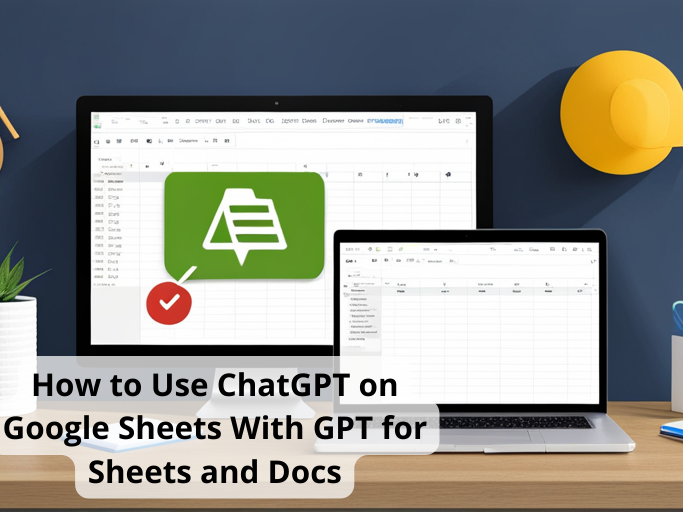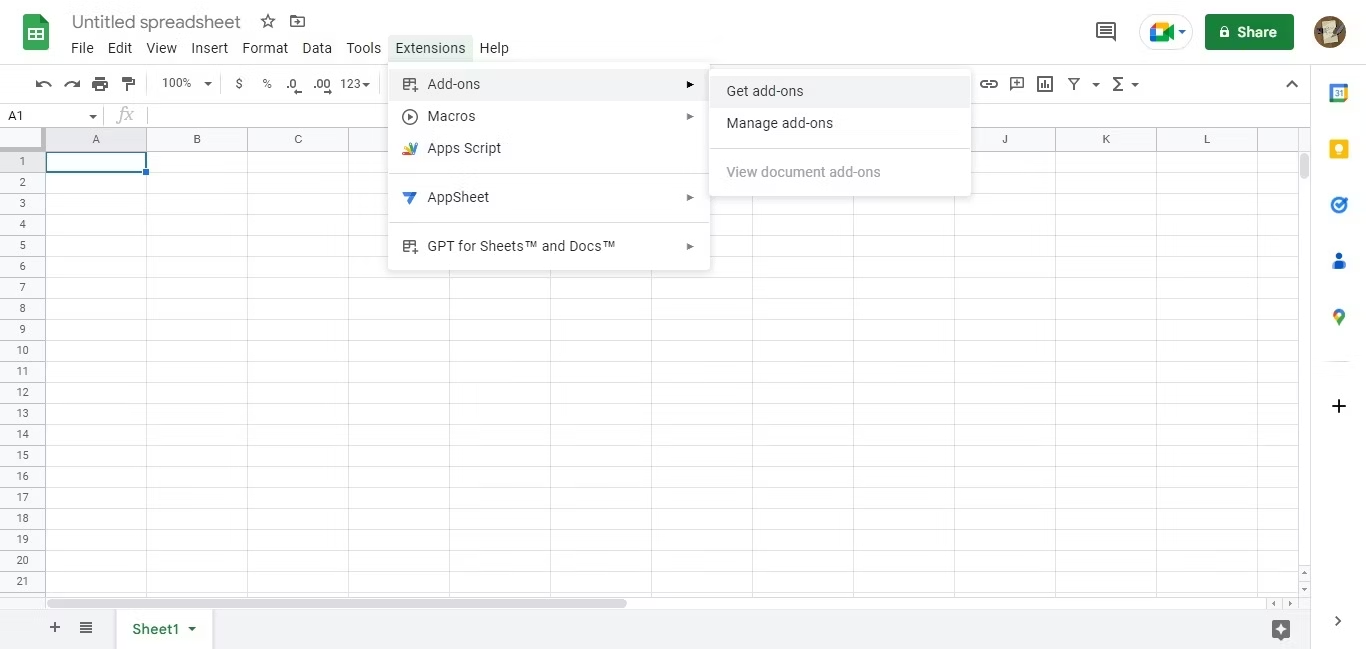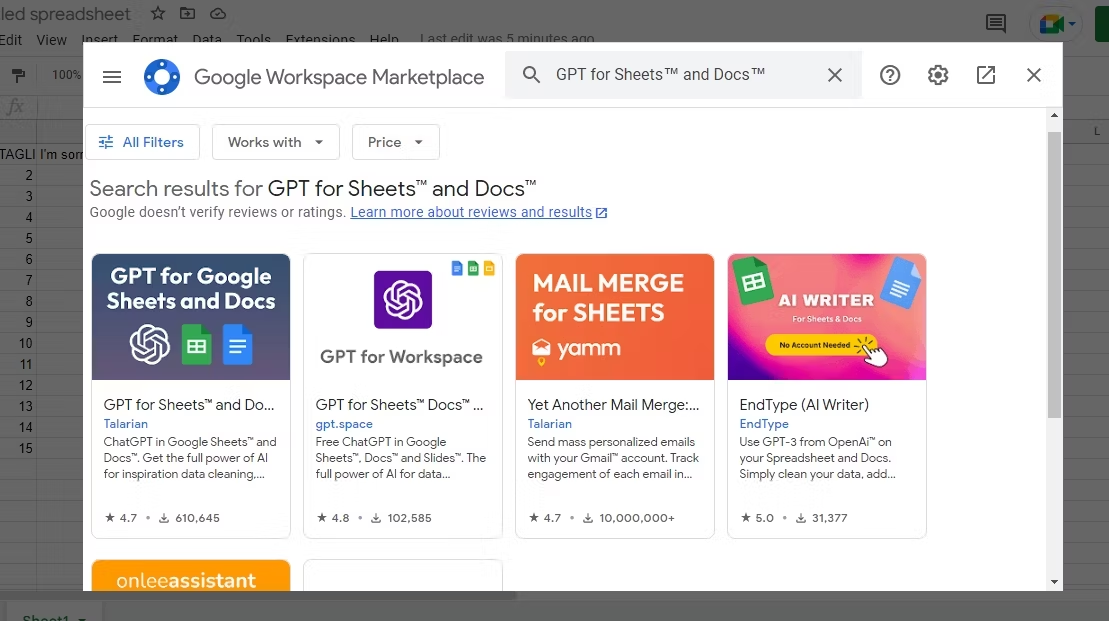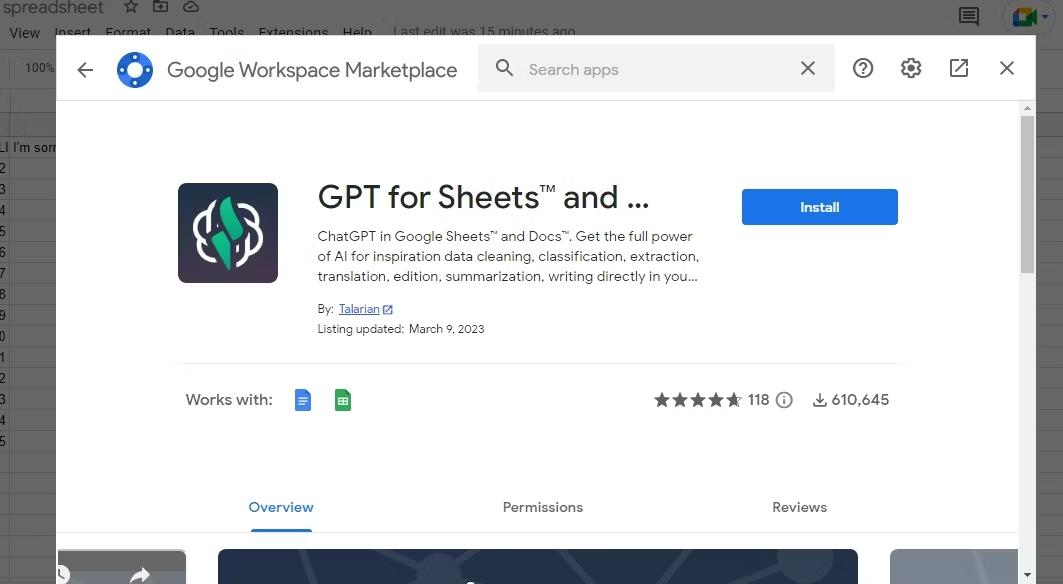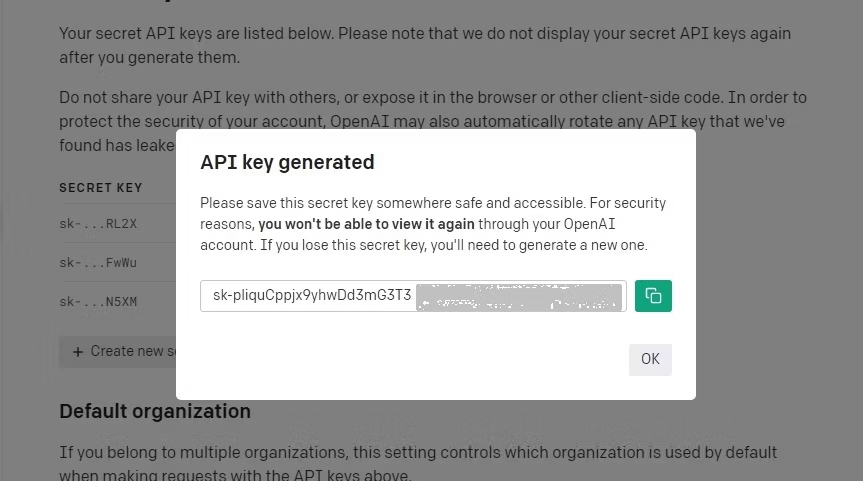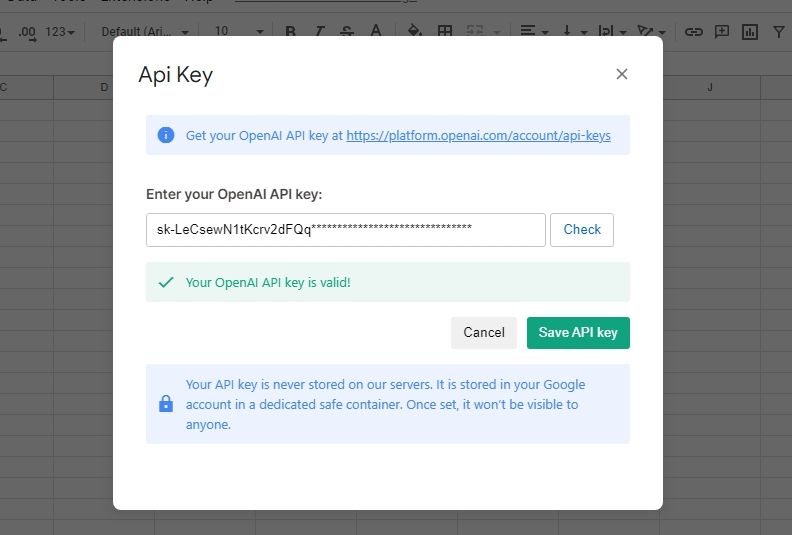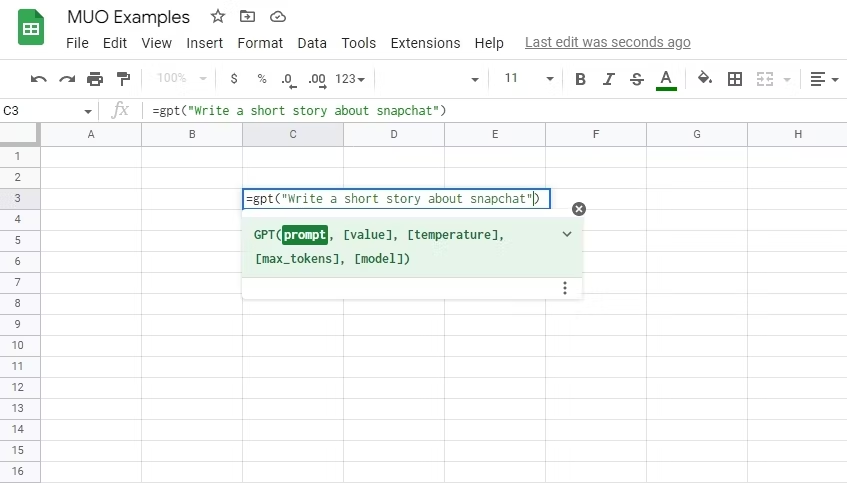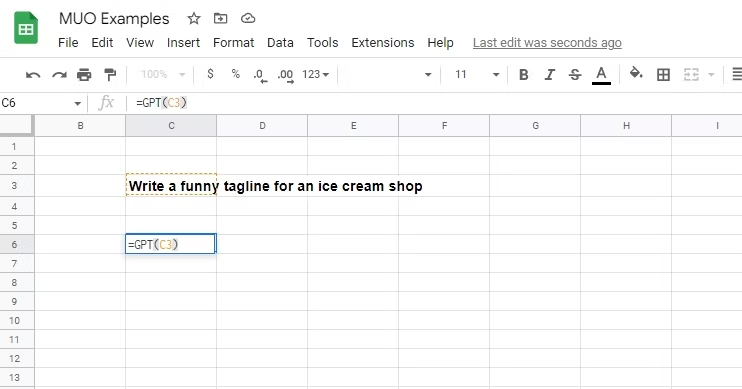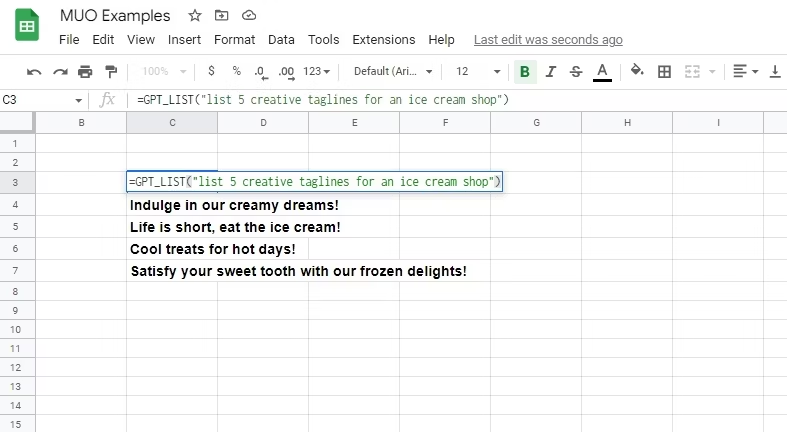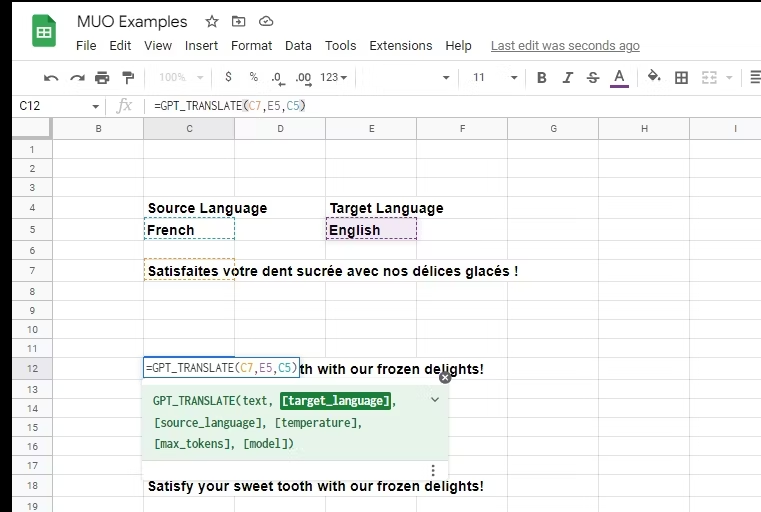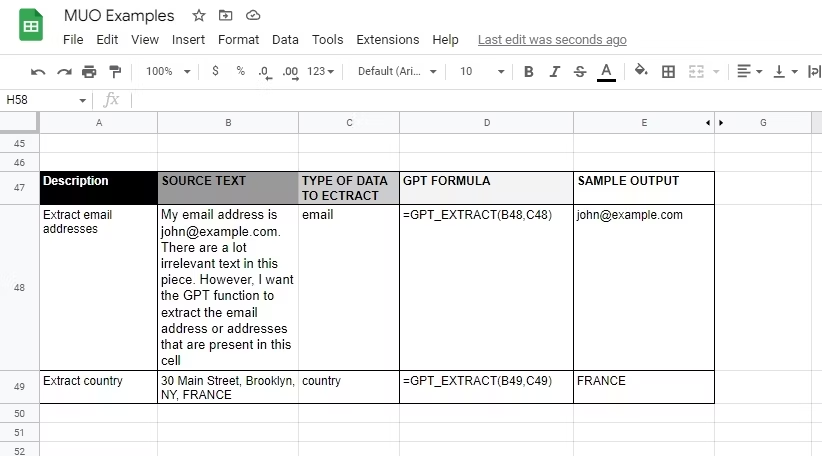The launch of ChatGPT opened up a whole new world of possibilities. ChatGPT has proven impressive in tasks like text generation, translation, summarization, cleaning up data, and a range of text-based tasks that are typically tedious to complete within spreadsheet applications.
So, what if we could invoke the powers of ChatGPT within a spreadsheet? Rather than thinking up complex formulas, what if you could provide instructions in English and let ChatGPT do the heavy lifting?
Sounds good, right? Here's how to integrate GPT technology into Google Sheets and get your spreadsheet done effortlessly.
How to Use the GPT for Sheets and Docs Extension
Although OpenAI does not have a ChatGPT extension for spreadsheet apps, you can still enjoy GPT technology within Google Sheets using third-party applications that interface with OpenAI's GPT API. One such third-party application is the "GPT for Sheets and Docs" extension. It is not a standalone app but a Google Sheets extension that makes it possible to use ChatGPT-like prompts wrapped in functions within your spreadsheets.
No, it doesn't require any programming knowledge to set up. The process isn't too technical—it is relatively easy to complete. All you'll need to get started is to grab an OpenAI API key and add the "GPT for Sheets and Docs" extension to your Google Sheets account. But how do you get an OpenAI API key?
How to Add the GPT for Sheets and Docs Extension to Google Sheets
To add the GPT for Sheets and Docs extension to your Google Sheets:
Open a new Google Sheets spreadsheet on your computer.
Locate and click on Extensions > Add-ons > Get Add-ons.

Up next, you should be taken to the Google Workspace Marketplace. Locate the search bar in the top right corner of the screen and search for GPT for Sheets and Docs.

Click on the first extension, as seen in the screenshot above. On the next page, click on Install and then Continue.

Select the Google account associated with your Google Sheets account and then tap Allow on the permission prompt to grant the extension access it needs to modify your spreadsheets.
After the installation, click Next and tap Done on the post-installation screen to complete the installation process.
With that done, the extension will be added to your Google Sheets account. However, to use GPT-powered functions and formulas within Google Sheets, you'll need an
OpenAI API key to activate the extension within Google Sheets.
How to Create an OpenAI API KeyTo use the GPT for Sheets and Docs extension, you'll need an API key from the OpenAI website. Here's how to create an OpenAI API key:
Visit OpenAI and sign up if you don't already have an account.
Once you've created an account, log in, and navigate to OpenAI's API keys page.
Up next, locate and click on the Create new Secret key button at the center of the page.
If all goes well, a pop-up with your API keys and an "API Key Generated" notification should appear on your screen. Next, tap the green copy button beside your API key to copy the key to your clipboard.

Once you've grabbed a free API key, you must add it to the GPT for Sheets and Docs extension on your Google Sheets account.
Open a new spreadsheet or reload the currently opened spreadsheet file.
Navigate to Extensions > GPT for Sheets™ and Docs™ > Set API key.
Paste the previously generated API key into the API input field and tap on Check. If it is a valid API key, you should get a "Your OpenAI API key is valid!" notification.

Tap on the Save API key to proceed.
With those steps completed, you're almost done with the setup process. The last step is to activate the GPT for Sheets and Docs extension. To do this, navigate to Extensions > GPT for Sheets and Docs > Enable GPT functions.
What Can You Do With GPT-Powered Google Sheets?Are you done setting up the Google Sheets extension? What exciting things can you do with GPT-powered Google Sheets?
Well, the possibilities are endless.
1. Generate TextWith GPT-powered Google Sheets, you can use regular ChatGPT prompts and get similar replies like you'd do with ChatGPT right within Google Sheets. For instance, if you want to populate cell C3 with a story about Snapchat, you could type the formula =GPT("Write a short story about Snapchat") right inside the cell.

Alternatively, you could type out the prompt on cell A1 and reference the cell in your formula using the formula =GPT(A1) to achieve a similar result.

Of course, we are dealing with a spreadsheet, so you probably need your results to span multiple cells. To do that, you can use the =GPT_LIST function. An example could be =GPT_LIST("write five creative taglines for an ice-cream shop") or =GPT_LIST(A1).
 2. Translate Text
2. Translate TextWith the GPT for Sheets and Docs extension, you can use ChatGPT translation prompts within Google Sheets. You can achieve this using the GPT_TRANSLATE function or wrapping a typical ChatGPT translation prompt around the base GPT function. This could be in the form of =GPT(" translate 'Bonjour' to English ") or GPT_TRANSLATE([text_to_translate], [target_language], [source_language]).
 3. Summarize Text
3. Summarize TextTo summarize text, you can either wrap a summarization prompt with the base =GPT function or use the =GPT_SUMMARIZE function. For instance, =GPT_SUMMARIZE(C44) will summarize the content of cell C44 into the active cell.
4. Extract DataIf you are working with a lot of mixed-up data or text, you can extract certain data types into assigned cells using the =GPT_EXTRACT function. For instance, you could paste a CSV file in, say, cell B23 and use =GPT_EXTRACT(B48, C48) to extract email addresses from the CSV text to the current cell. In the function, the C48 references a cell that contains the data type to extract, in this case, email addresses.

Boost Your Productivity With ChatGPT Prompts in Google SheetsIf you are a fan of ChatGPT and Google Sheets, you'll find GPT for Sheets and Docs a useful addition to your productivity tools. With it, you'll be able to do the things you'd typically do with ChatGPT in your spreadsheets.
There's no fixed list of what you can achieve with GPT for Sheets. What you do with it all boils down to how imaginative you can be with prompting and using the built-in GPT functions.
